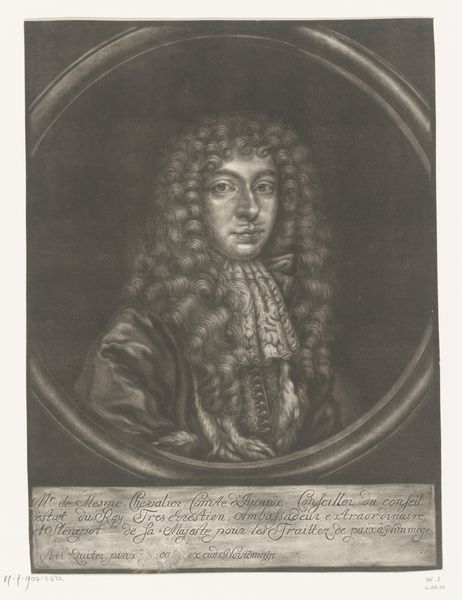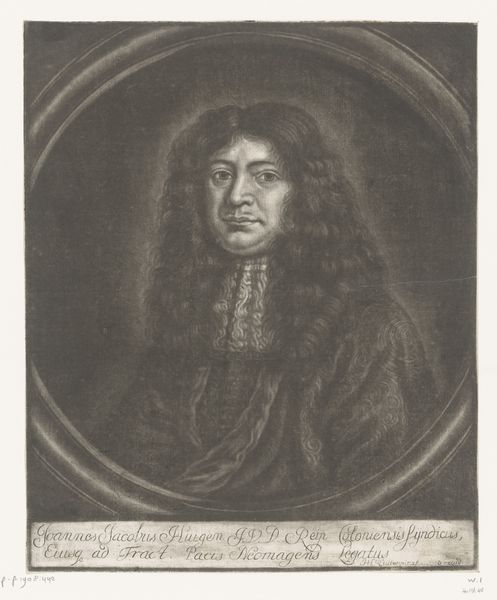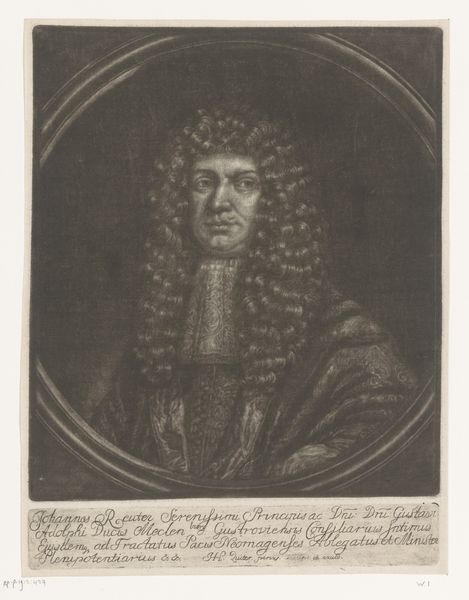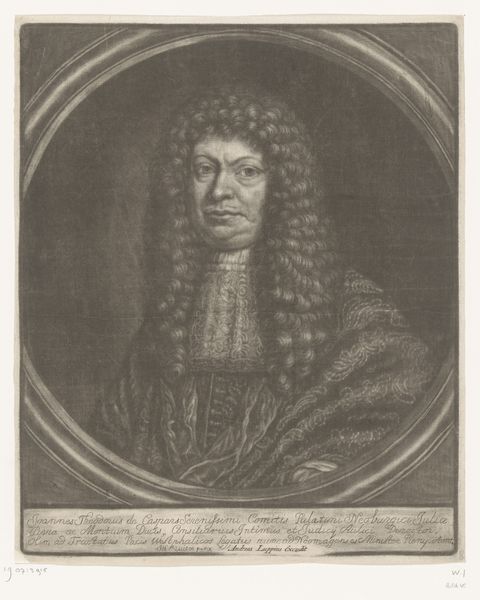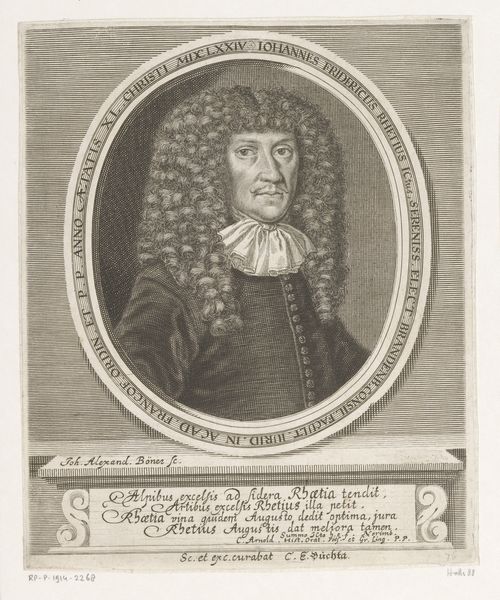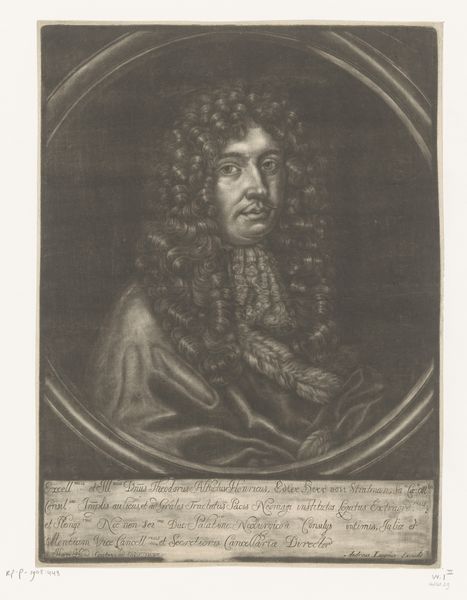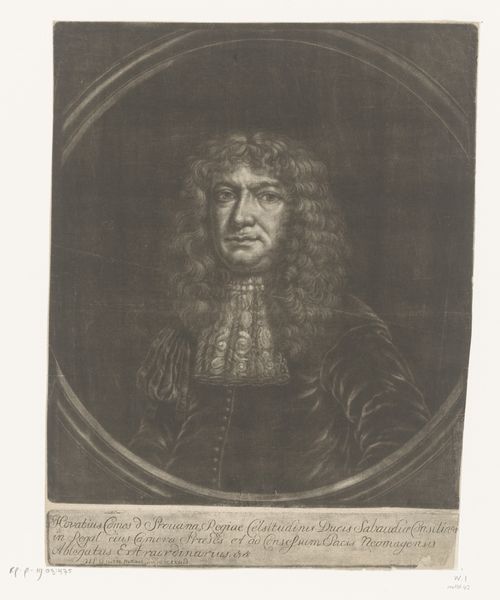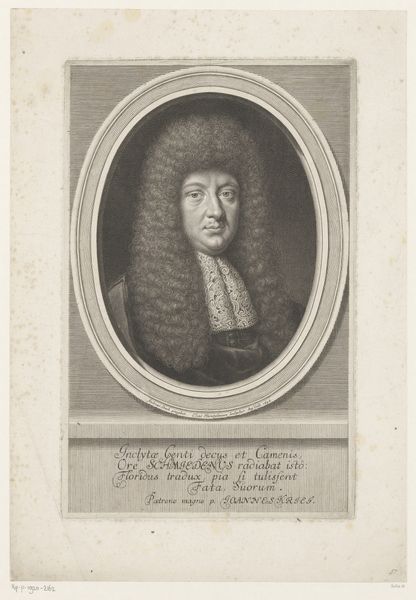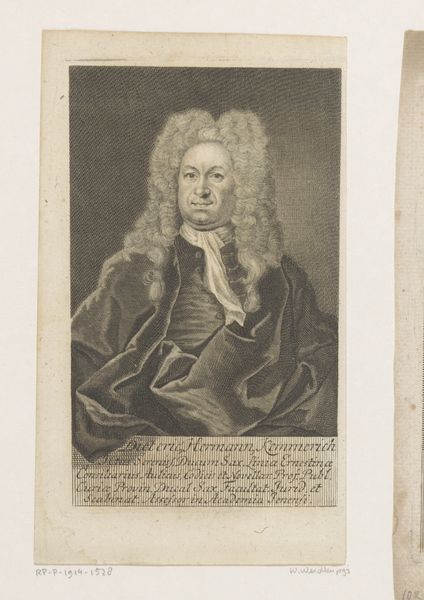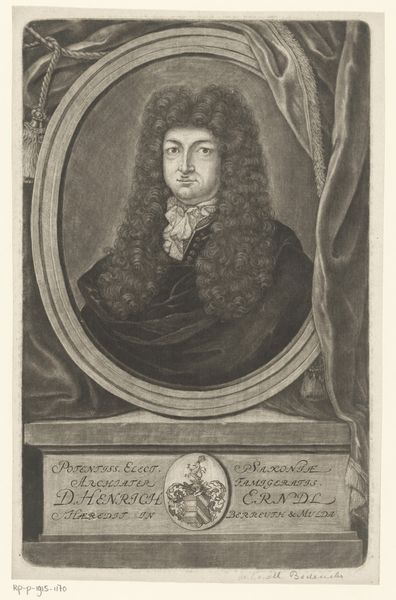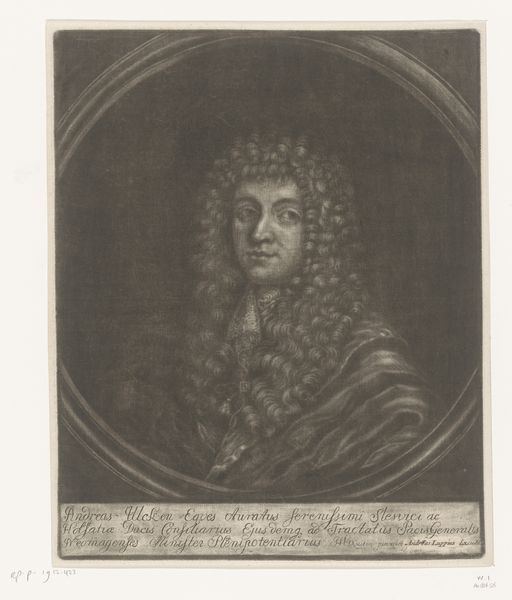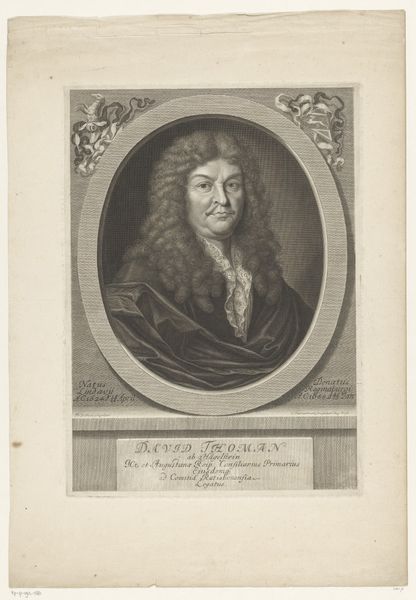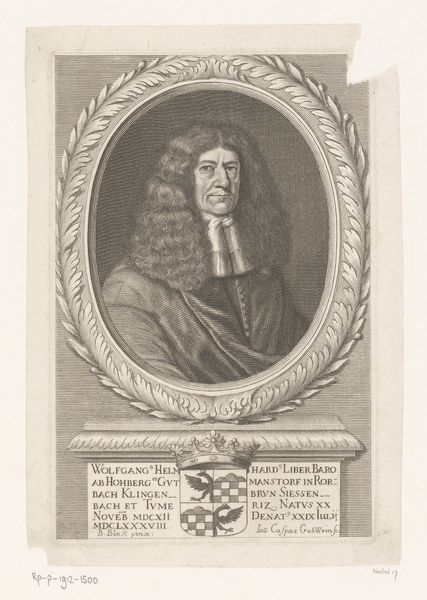
drawing, print, engraving
#
portrait
#
drawing
#
baroque
# print
#
pencil sketch
#
charcoal drawing
#
charcoal art
#
pencil drawing
#
line
#
engraving
Dimensions: height 325 mm, width 255 mm
Copyright: Rijks Museum: Open Domain
Curator: This engraving, dating to 1679, is entitled "Portret van Heinrich Balemann" and was crafted by Herman Hendrik Quiter. Balemann was, among other things, a Syndic, and envoy at the peace treaty of Nijmegen, which tells us about the social context in which the artist and his subject lived. Editor: The overall tone is stately but subdued, wouldn't you agree? I’m struck by the contrast between the very detailed lace collar and wig, and the comparatively smudged, almost unfinished rendering of the body and background. The engraver focuses most on the face and the texture of the wig. Curator: Exactly, the wig itself is significant! Large, elaborate wigs like this were markers of status and power in the late 17th century. A portrait such as this served to broadcast Balemann's position and connections within the social hierarchy of the time. Quiter, though lesser-known, clearly understood the assignment! Editor: I find the circular frame almost constricting, and maybe that feeling is heightened by the sitter’s intense gaze. Notice how Quiter positions Balemann slightly off-center? I read it as a conscious compositional decision to create visual tension. Curator: That’s astute, and I agree about the intensity. Portraiture of this era was inherently political. The ability to project strength and authority was essential, especially for someone like Balemann involved in international negotiations. What we read as “intense” might also be viewed as a carefully cultivated expression of diplomatic prowess. Editor: I'm also quite taken by the texture achieved with what appear to be only very simple line techniques. Quiter used varying densities of lines, but I'm especially noticing a more coarse grain that seems to create shadows on the bottom. The formal features speak volumes, or… in this case… they express power. Curator: In terms of understanding the broader cultural implications, these portraits functioned almost like early forms of propaganda. Images like these were actively disseminated, which is quite clear since this piece is a print! It influenced perceptions and legitimized authority through careful image construction. Editor: I now see his engagement with not just representing his subject, but also carefully staging an identity to express broader cultural themes. The work is both refined and quite crude, but that contrast heightens the image's impact, rather than hindering it. Thank you for pointing out how these political elements add so much depth.
Comments
No comments
Be the first to comment and join the conversation on the ultimate creative platform.
